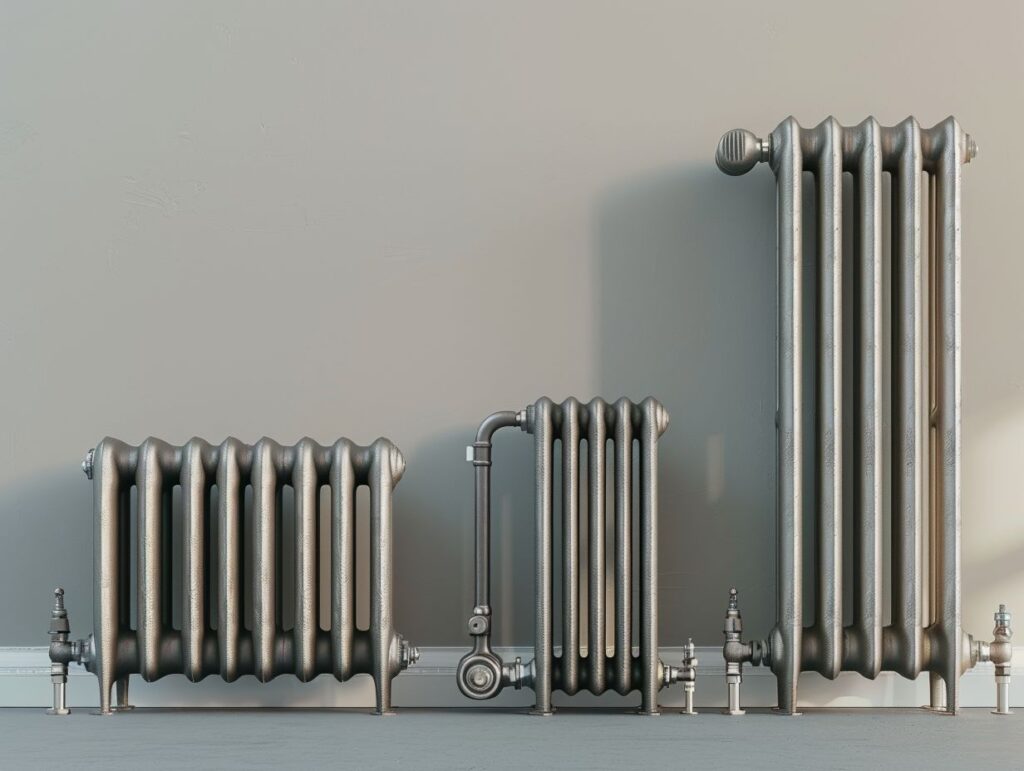If you are considering upgrading your heating system with a new radiator, it is important to understand the different types and sizes available to make an informed decision.
The various types of radiators will be discussed, and factors to consider when choosing the right size will be outlined. This includes assessing room size, heat output requirements, calculating BTU needs, and taking into account design and energy efficiency.
By following our guidance, you will be led through the process of selecting the ideal radiator for your home, ensuring that it meets your heating needs effectively.
Key Takeaways:
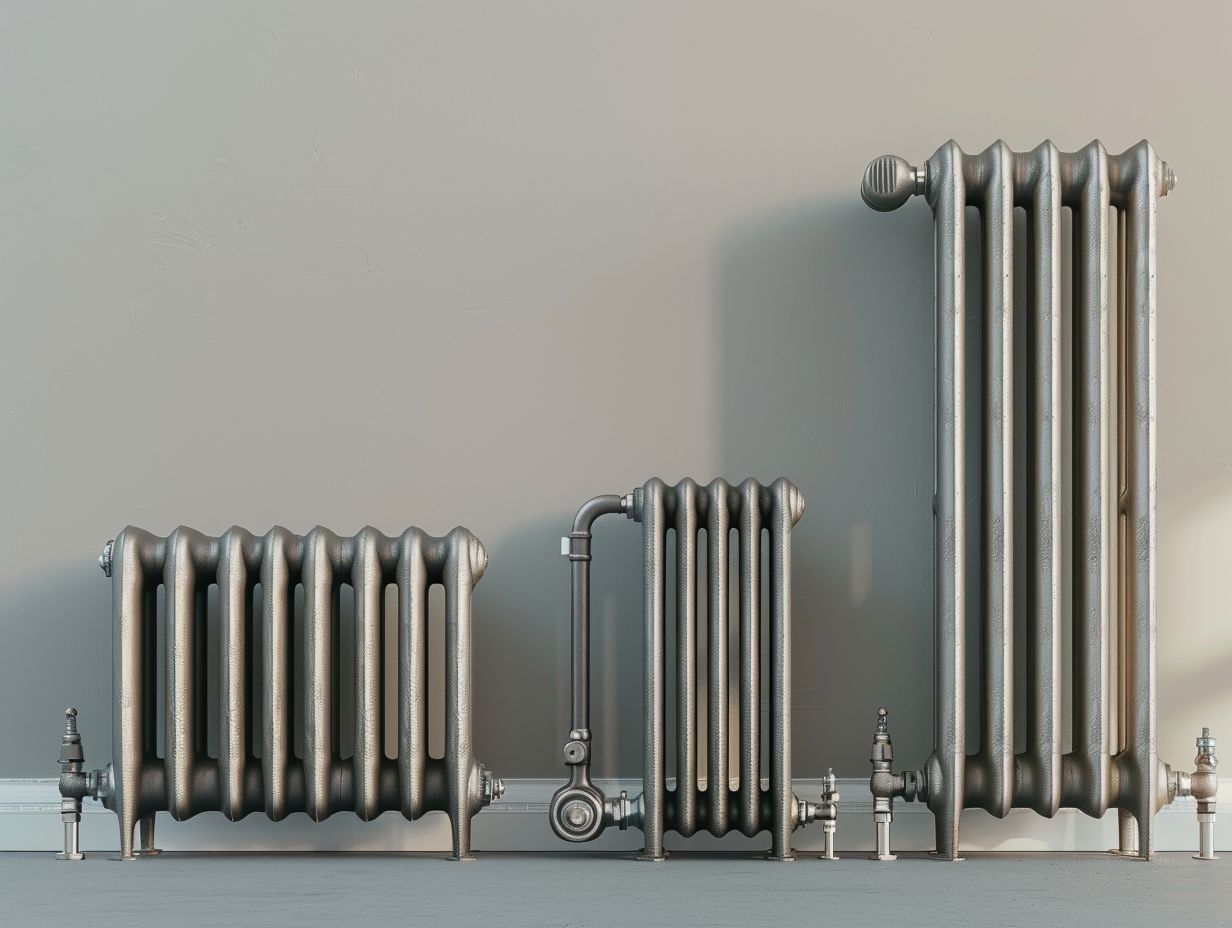
- Consider the size of your room and heat output requirements when choosing a Type 11 radiator.
- Measure heat loss and calculate BTU requirements to determine the right size radiator for your space.
- Don’t forget to factor in design, aesthetics, budget, and energy efficiency when making your final decision.
Understanding Radiator Types and Sizes
Understanding Radiator Types and Sizes is essential for achieving optimal heating efficiency in any space. Different radiator types, such as panel radiators with convection fins, are available in variations like Type 22, Type 11, Type 21, and Type 33, each offering specific heat output capabilities and design aesthetics.
Panel radiators are recognised for their effective heat distribution and modern design, making them a favoured option for contemporary interiors. The heat output of a radiator is directly influenced by its size, underscoring the importance of utilising radiator size charts.
By carefully selecting the appropriate size based on the room’s dimensions and heating requirements, you can ensure the efficient dispersion of heat.
The popularity of designer radiators is on the rise due to their ability to improve heating efficiency while also adding a touch of sophistication to the room’s decor.
Overview of Different Types of Radiators
When you are exploring the Overview of Different Types of Radiators, it is crucial to consider various options beyond traditional panel radiators. These options include towel radiators, LSTs (Low Surface Temperature radiators), skirting board radiators, and even underfloor heating systems for efficient distribution of heat.
Towel radiators, also referred to as heated towel rails, not only provide warmth to the room but also serve the dual purpose of warming and drying towels. They are particularly suitable for bathrooms and kitchens, and are available in a variety of styles, ranging from ladder designs to more traditional rails.
On the other hand, LSTs are specially designed for environments where safety is of utmost importance, such as hospitals and schools, as they help minimise the risk of burns.
Skirting board radiators are discreet and space-saving, seamlessly fitting along the base of walls to provide efficient heating. In contrast, underfloor heating systems offer luxurious warmth by evenly spreading heat across the floor, creating a comfortable ambiance in any room.
Factors to Consider When Choosing a Radiator Size
When selecting the right Radiator Size, you need to consider factors such as room dimensions, required heat output, placement options, and installation requirements. It is important to ensure that radiators are properly balanced and that appropriate radiator valves are used to achieve optimal heating performance.
In determining the ideal radiator size for a room, it is crucial to consider the size of the space as it directly impacts the required heat output for comfortable heating. Larger rooms typically necessitate larger radiators or multiple smaller radiators to guarantee adequate warmth distribution.
The placement of radiators is critical in maximising heat effectiveness. Placing radiators under windows or on exterior walls can help counteract heat loss, while ensuring proper ventilation around the radiator promotes efficient heat distribution.
Utilising proper installation techniques, such as bleeding the radiator to eliminate air pockets, is essential for maintaining optimal heating efficiency.
Room Size and Heat Output Requirements
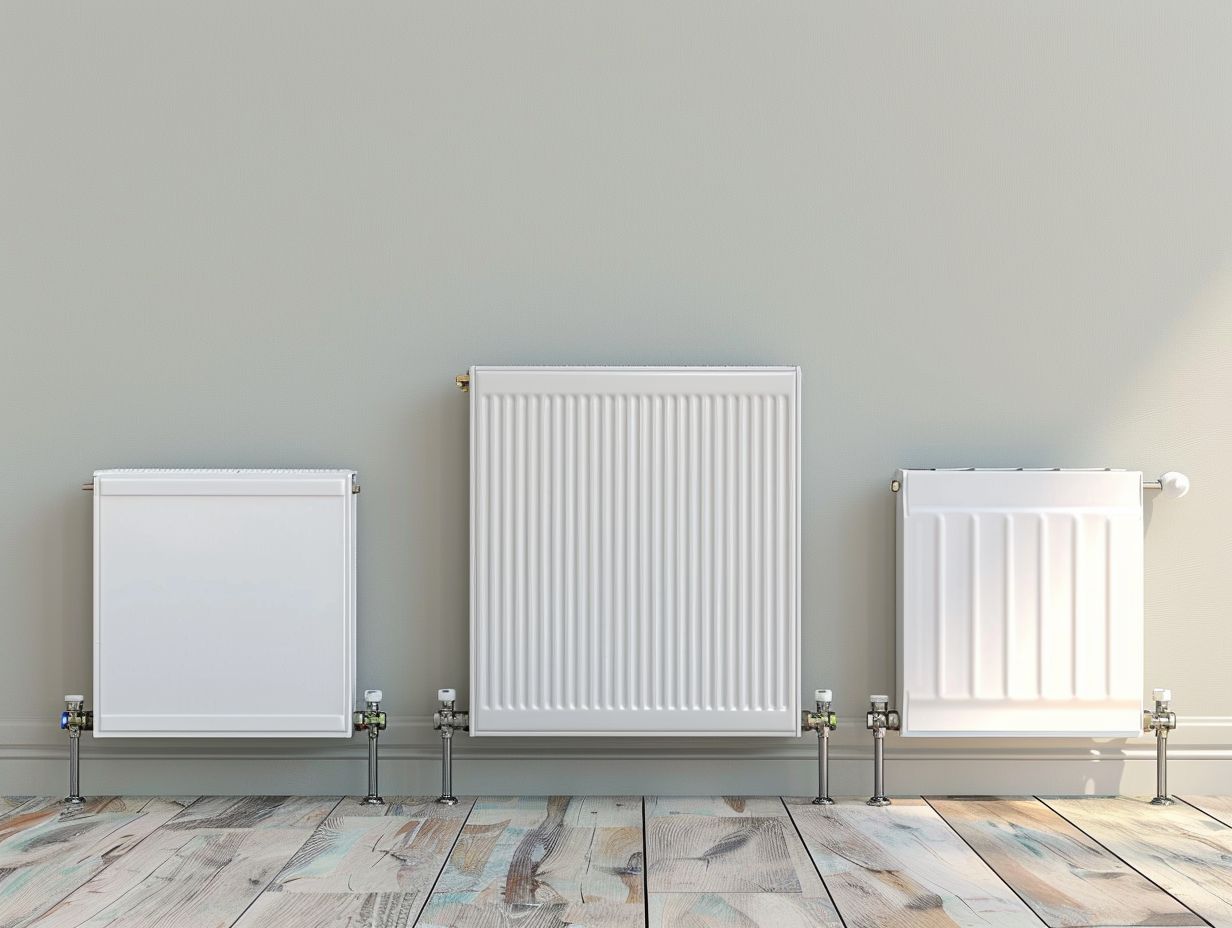
When assessing Room Size and Heat Output Requirements, you must ensure that the radiator sizes align with the dimensions of the space and conduct precise heat loss calculations to ascertain the optimal heat output necessary for effective heating.
The size of a room directly influences the heat output requirements for maintaining a comfortable temperature. Larger rooms demand radiators with greater heat output capacities to adequately heat the area.
Choosing the right radiator sizes based on room dimensions necessitates considering factors like ceiling height, insulation levels, and window sizes, as these elements impact the heat loss rate.
To guarantee that the radiators effectively meet the heating requirements, conducting heat loss calculations is essential. These calculations entail evaluating the construction materials, the room’s orientation, and the desired temperature levels to determine the most appropriate radiator sizes for optimal heating performance.
Placement and Installation Considerations
When optimising the efficiency of radiators, proper placement and installation considerations are essential. It is critical to strategically install radiators in locations that facilitate effective heat distribution and to bleed them properly to eliminate air and enhance performance.
Strategically placing radiators involves situating them near windows or exterior walls to allow heat to flow easily throughout the room. This practice ensures even heat distribution, prevents cold spots, and maximises overall heating efficiency.
During radiator installation, it is crucial to avoid obstructions such as furniture or curtains that may impede heat output. The correct installation and placement of radiators can significantly impact the comfort level of a living space, particularly during colder months.
Calculating the Right Size Type 11 Radiator
Calculating the Right Size Type 11 Radiator involves precise heat loss calculations, determining the required British Thermal Units (BTU), and considering the efficiency factor of Type 11 radiators denoted by the h2x value for optimal heating performance.
The key to accurately sizing Type 11 radiators lies in understanding the heat loss of the space to be heated. By calculating the heat loss through walls, windows, and other factors, you can arrive at the BTU needed to maintain a comfortable temperature.
Once the BTU requirements are known, selecting a radiator with the appropriate h2x efficiency factor becomes crucial. The h2x value determines how effectively the radiator can convert fuel into heat, impacting both energy efficiency and heating performance in the long run.
Measuring Heat Loss and BTU Requirements
When measuring Heat Loss and BTU Requirements, it is essential for you to accurately determine the heating needs of a space.
Calculating the British Thermal Units (BTU) required based on heat loss and kilowatt values can help optimise energy usage and maintain efficient heating. This process is crucial for ensuring that your heating system operates at peak performance levels while minimising energy waste.
By accurately estimating the heat loss through walls, windows, and other surfaces, you can tailor the BTU output to meet the specific requirements of the space. Understanding the relationship between BTU, kilowatts, and energy usage allows for more informed decisions when selecting the right heating equipment and settings.
Through precise heat loss calculations, you can identify areas for improvement and implement strategies to enhance heating efficiency, ultimately leading to cost savings and reduced environmental impact.
Choosing the Right Size for Your Space
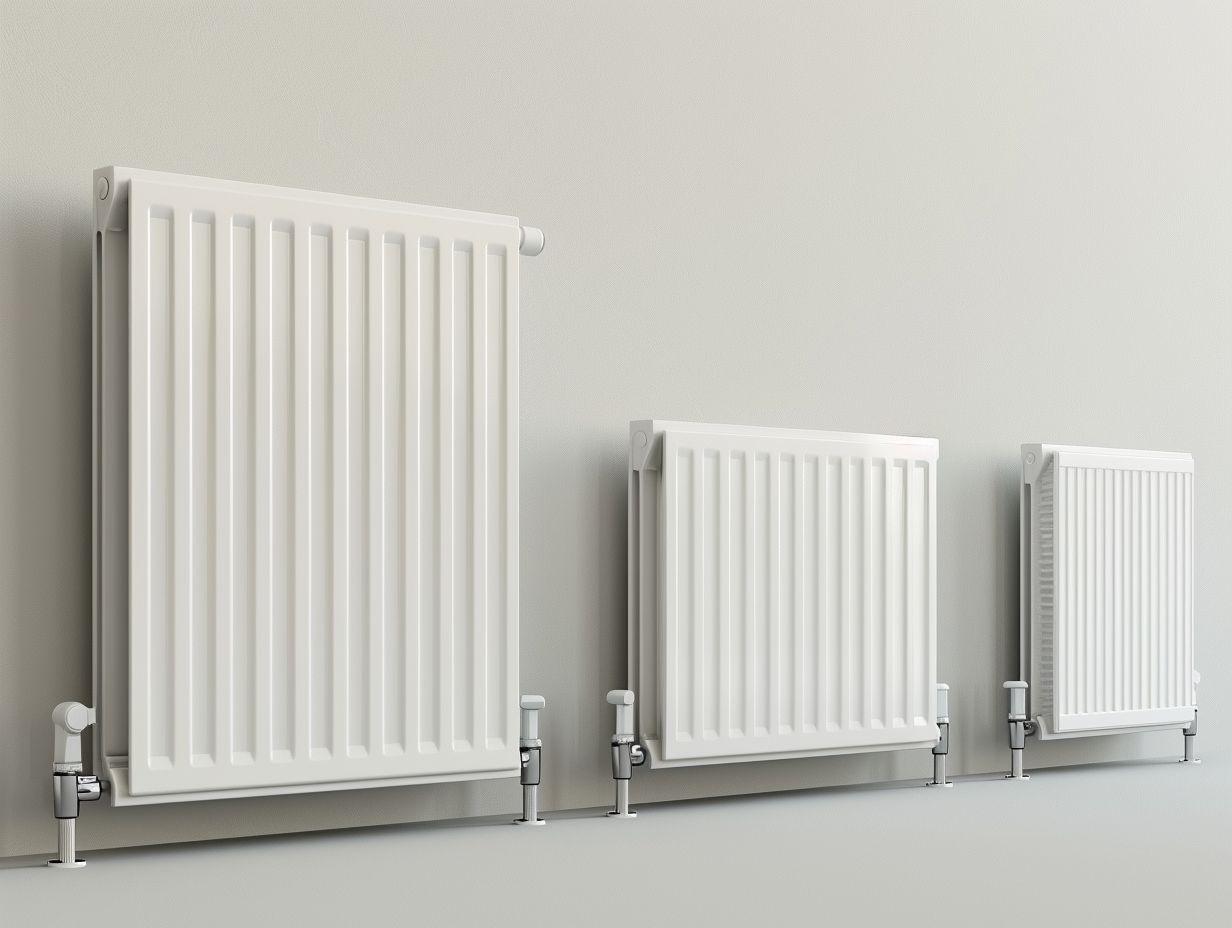
When choosing the right size for your space, it is important to consider radiator sizes that align with the design temperatures required for optimal heating comfort. Selecting appropriately sized radiators ensures that your space is efficiently heated to the desired temperature levels.
The alignment of radiator sizes with design temperatures is critical as using radiators that are too small may result in insufficient heating and discomfort in your space, while oversized radiators can lead to overheating and energy wastage.
By understanding the specific heating needs of your space, including factors such as room size, insulation quality, and desired temperature levels, you can effectively choose radiators that meet these requirements.
This customised approach not only enhances comfort levels but also contributes to energy efficiency, as appropriately sized radiators operate more efficiently and effectively.
Other Important Considerations
Along with radiator types and sizes, you should also consider other important factors such as design aesthetics, budget constraints, and energy efficiency when making heating decisions. It is essential to balance your style preferences with energy-saving features to effectively manage your heating and energy expenses.
When choosing radiators for a specific space, it is crucial to evaluate how the design and aesthetics will complement the overall decor. A well-selected radiator not only provides warmth but can also enhance the visual appeal of the room.
Budget considerations are equally significant, as they determine the range of options available to you. Energy efficiency is a critical element in reducing both heating costs and overall energy consumption. Opting for energy-efficient radiator models can result in long-term savings and provide a more sustainable heating solution.
Design and Aesthetics
When focusing on Design and Aesthetics, your choice of radiators should go beyond just functionality to complement the overall interior design. Designer radiators offer a harmonious blend of style and functionality, enhancing the visual appeal of the space while also providing efficient heating.
The sleek and modern designs of designer radiators have the power to transform a room into a chic and sophisticated living space. By carefully selecting radiators that not only heat effectively but also contribute to the aesthetic harmony of the room, homeowners can create a cosy and stylish ambiance.
It’s crucial to strike a balance between style preferences and heating efficiency to achieve the perfect combination of comfort and design. The right radiator choice can act as a statement piece, adding a touch of elegance to the room while ensuring optimal warmth during the colder months.
Budget and Energy Efficiency
When managing heating bills and overall energy costs, it is crucial for you to consider budget and energy efficiency. By investing in energy-efficient radiators, you can achieve long-term savings and reduce heating expenses while still maintaining optimal heating performance.
It is essential for you to select the right radiator that aligns with your budget and energy-saving objectives. When searching for radiators, prioritise energy-efficient models with high Energy Star ratings, as they can significantly contribute to lowering your heating bills.
Factors such as the size of the room, insulation levels, and heating requirements should be taken into account to ensure that you choose a radiator that provides efficient heating without unnecessary energy waste.
By emphasising cost-effective heating solutions that prioritise both performance and savings, you can create a comfortable living environment while effectively managing your expenses.
Frequently Asked Questions
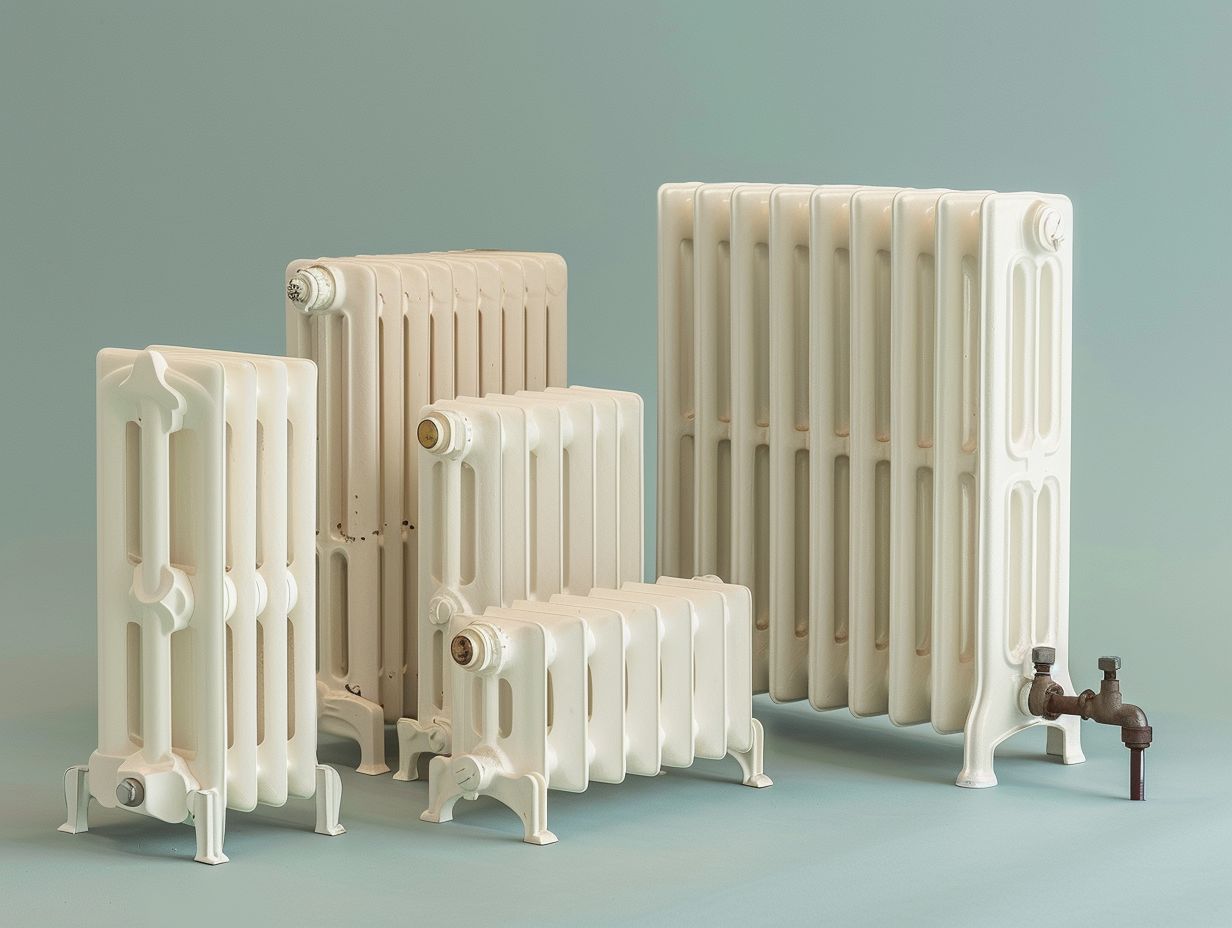
How do I know what size Type 11 radiator I need?
There are a few key factors to consider when choosing the right size Type 11 radiator, such as the room size, heat output required, and the amount of wall space available. It’s important to accurately measure the dimensions of the room before making a decision. You can also use an online radiator size calculator to help determine the appropriate size.
What is the difference between single panel and double panel Type 11 radiators?
A single panel Type 11 radiator has one row of panels, while a double panel has two rows. Double panel radiators have a higher heat output due to the additional panels, making them more suitable for larger rooms or spaces that require more warmth. Single panel radiators are more compact and suitable for smaller rooms.
Can I use a Type 11 radiator for both heating and cooling?
Yes, Type 11 radiators can be used for both heating and cooling purposes. They can be connected to your central heating system to provide warmth in the winter, and can also be used with a cooling system in the summer to regulate the temperature of a room.
Are there any space limitations when choosing a Type 11 radiator?
Type 11 radiators can be quite bulky, so it’s important to consider the available wall space when making your selection. If space is limited, you may want to consider a slimmer model or a different type of radiator, such as a Type 22 which has two rows of panels but is still compact in size.
Is it better to have a larger or smaller Type 11 radiator?
The size of Type 11 radiator you choose will depend on your specific heating needs. A larger radiator will have a higher heat output and can warm up a room more quickly, but it may not be necessary for smaller spaces. It’s important to find the right balance between size and heat output to ensure efficient heating.
Can I install a Type 11 radiator myself?
It is always recommended to hire a professional to install your Type 11 radiator to ensure it is done correctly and safely. However, if you have experience with plumbing and heating systems, you may be able to install it yourself. Just be sure to carefully follow the manufacturer’s instructions and consult a professional if you have any doubts.

